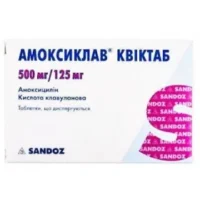Description
Zavedos (idarubicin hydrochloride) Lyophilisate for Infusions 5 mg Vial №1
Ingredients
- Active ingredient: Idarubicin hydrochloride
- Inactive ingredients: Lactose, hydrochloric acid, sodium hydroxide
Dosage
Dosage: The dosage of Zavedos is individualized based on the patient’s condition, weight, and overall health. It is administered intravenously by a healthcare professional.
Indications
Indications: Zavedos is indicated for the treatment of acute myeloid leukemia (AML) in adults. It works by stopping the growth of cancer cells.
Contraindications
Contraindications: Do not use Zavedos if you are allergic to idarubicin or any of the inactive ingredients. It is not recommended for use during pregnancy.
Directions
Administration: Zavedos is administered as an intravenous infusion over a specific period as directed by a healthcare provider. It is crucial to follow the recommended dosage and infusion rate.
Scientific Evidence
- Pharmacological Effects: Idarubicin hydrochloride, the active ingredient in Zavedos, belongs to a class of medications known as anthracyclines. It works by interfering with the growth and spread of cancer cells in the body.
- Clinical Trials: Clinical trials have demonstrated the efficacy of Zavedos in the treatment of AML. Studies have shown that idarubicin is effective in inducing remission in patients with AML. A study published in the Journal of Clinical Oncology demonstrated higher response rates and improved overall survival with idarubicin-based regimens compared to other chemotherapy agents.
Additional Information
- Zavedos should only be administered under the supervision of a qualified healthcare provider experienced in the use of cytotoxic chemotherapy agents.
- Regular monitoring of blood counts is essential during treatment to assess the response and manage potential side effects.
- Prior to starting Zavedos treatment, inform your healthcare provider about any existing medical conditions, ongoing medications, and allergies. Adherence to the prescribed dosage and schedule is crucial to maximize the benefits of the medication.





